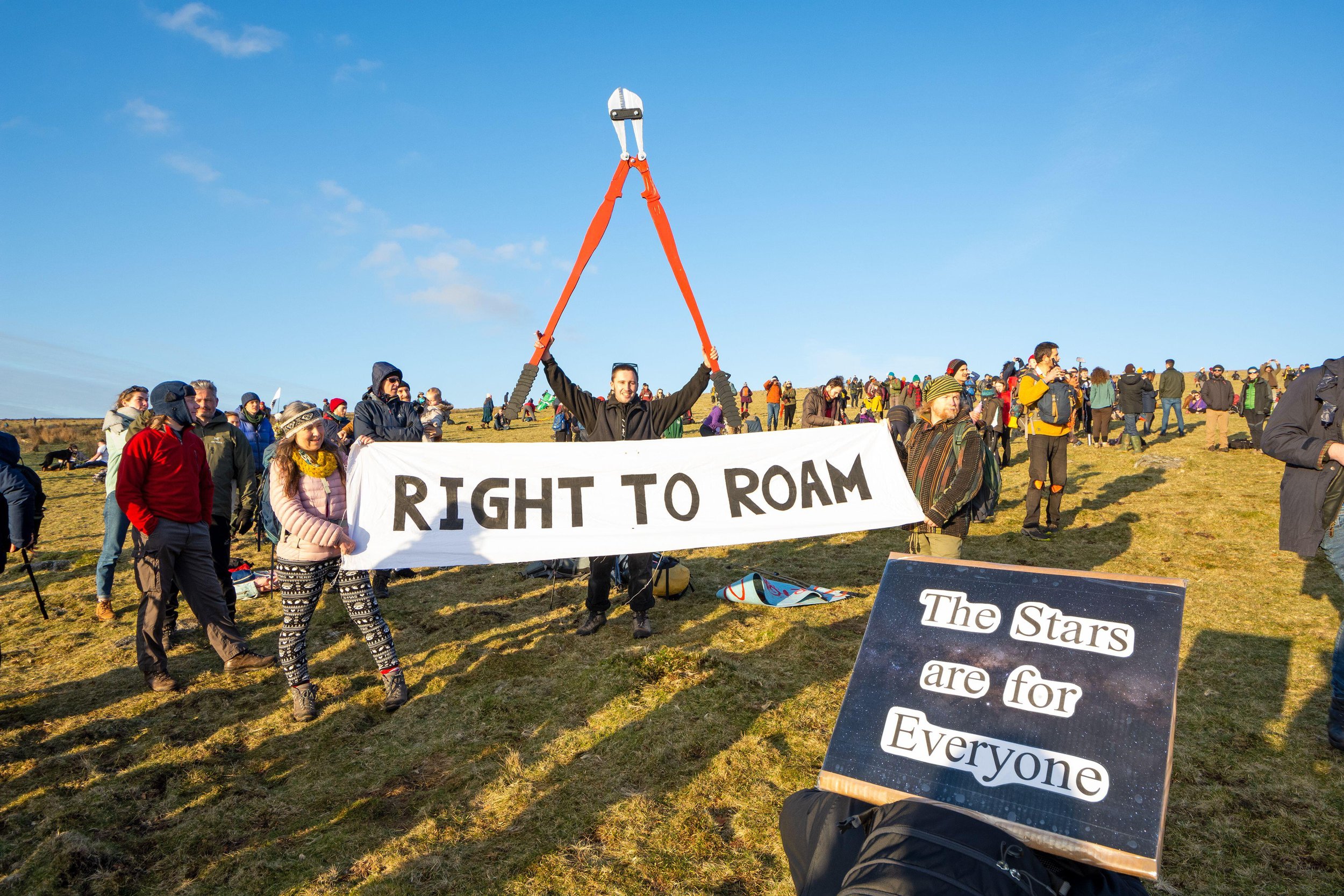Do we really need more rights to roam in the countryside?
A planned mass trespass on a Dartmoor Tor by Right to Roam protesters was called off last month (February) because of bad weather. Campaign group leaders took the sensible decision to cancel because of the risk of damaging the land in boggy conditions – and the potential threat to protesters scaling a Dartmoor Tor in a storm.
But the movement fighting for greater access to open spaces in England and Wales is certainly not abandoning the cause, with further demonstrations planned in other parts of the country. The current focus of their anger is the fact that some open access areas, including areas on Dartmoor, are effectively inaccessible because they can only be reached by crossing private land. “We’re forced to trespass,” the campaigners claim.
More broadly, they say that some 92% of the British Isles remains closed off to walkers – and they want the law changed to give much greater access for the public to explore and enjoy private land, including the right, they say, “to camp, kayak, swim and climb.”
Yet farmers and landowners – and some conservation groups – have grave concerns about widening access to the English and Welsh landscape. And they point to the fact that in England alone there are already 140,000 miles of public footpaths, along with hundreds of thousands of acres of open access land on our moors, heaths and commons, which are available to all.
Victoria Vyvyan, the Cornish-based president of the CLA, grew up on the edge of Dartmoor and now looks after the interests of thousands of landowners. She told the BBC: “No one is forced to trespass. It is choice and millions of acres of land are publicly accessible without the need to do so.”
She also pointed out that managing the rights of way that do exist comes at a cost to farmers and landowners. “Gates, stiles, paths…they all cost money and time in their creation and management,” she said, arguing that any extension in public access to the countryside needed to come with financial support for those who had to provide it.
It is possible to deal with the anomaly that has left some open access areas ‘islanded’ – with no way in except across private land. Some landowners have already created permissive paths to give walkers a way in, while local authorities can – if there is a perceived need – create new statutory rights of way.
But on the wider issue of simply opening up the countryside with far fewer restrictions on access, strong differences of opinion remain. Figures just out from the rural insurer NFU Mutual reveal a 30% year-on-year increase in dog attacks on livestock. Farmers would oppose giving greater access to their fields to irresponsible dog owners who threaten their livelihoods.
Vulnerable wildlife, including ground-nesting birds, also need protection at certain times of the year and conservation groups would, at the very least, want to encourage walkers, especially those with dogs, to stay away from sites with breeding birds.
There is also an argument to say that the Right to Roam campaigners are trying to solve a problem that doesn’t exist. Almost a century ago factory workers desperate to escape their noisy, dirty cities for the uplands at weekends undertook a mass trespass on Kinder Scout in Derbyshire’s Peak District. Their protest proved successful, paving the way for, among other things, the creation of the National Parks and the route of the Pennine Way.
Today the network of footpaths and bridleways that criss-cross England and Wales that they helped to fight for are seldom crowded, away from the tourist honeypots. The keenest walker would struggle to visit all of the nation’s open access areas in several lifetimes.
If there is a problem, many would say, it is that there are already plenty of places where the public has a right to roam – but that too few people make use of them.
The Right to Roam campaigners disagree saying that many of England’s rivers are accessible only to those who fish, woodlands are off limits because of game shooting and England’s remaining virgin downland is often cut off because the fields around are ploughed up and private.
Public rights to private land has been a point of conflict in the countryside for many decades, probably more. Today rights to roam are almost certainly more extensive than they have ever been. But are they enough? Clearly not everyone thinks so.

